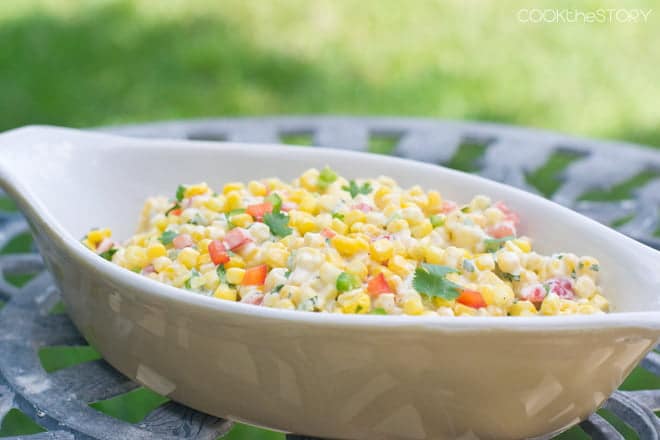Learn how to cook farro on the stovetop. It’s such a delicious, versatile, and hearty grain. I know you’re going to love it!
Farro is an ancient grain with wonderful texture and flavor. It’s also easy to cook. Here I’m explaining how to cook it on the stove. Scroll down to read more about farro and tips on cooking it, or click here to jump down to the recipe.
- Video: How To Cook Farro
- What is Farro?
- Do You Need To Soak Farro Before Cooking It?
- Do You Need To Rinse Farro Before Cooking It?
- How Much Farro To Cook
- How Much Water To Use
- How Long To Cook Farro On The Stove
- How To Reheat Farro
- Other Ways To Cook Farro
- Recipes Using Farro
- Podcast Episode About Cooking Farro On The Stove
- How to Cook Farro on the Stove

Video: How To Cook Farro
What is Farro?
Farro is an ancient grain that’s been around forever. Longer than any other grain, in fact. It’s believed that it is the grain from which all others derive. Farro is high in protein, fiber, and B Complex vitamins and it’s pretty low in gluten.
When cooked, farro looks a bit like barley but it has a chewier texture. That chewy texture remains even after long-cooking so it’s great in soups and stews where it never gets soggy. That chewy texture also makes for tasty salads. You can pretty much take any pasta salad recipe and turn it into a farro salad recipe successfully.
Do You Need To Soak Farro Before Cooking It?
No. You can speed up the cooking time for farro by soaking it in cool water. But honestly, since it only takes about 30 minutes to cook farro without soaking it first, I don’t usually bother with this step. it’s more annoying to get it soaking and have it taking up fridge space than it is to let it cook for the full time. But that’s just me. If you’d like to soak it and reduce the cooking time, you can. Here’s how:
To soak farro: Measure it into a pot with a tight-fitting lid. Add enough cold water to completely submerge the grain. Put the lid on the pot and refrigerate for 8-24 hours. Drain off the liquid. Then, when using the recipe below, you will only cook the farro for 10 minutes instead of 30 minutes.
Do You Need To Rinse Farro Before Cooking It?
No. If you’re cooking farro on the stove, you don’t need to rinse it first. I will admit though that I often do anyways. It’s a habit I have from cooking quinoa and from cooking millet, where you rinse the grains to remove any dust, and that’s when you would typically look through to make sure that there isn’t anything there that shouldn’t be there.
However, if you’ve purchased your farro from a modern grocery store and it’s in a sealed package, you don’t need to rinse it. The exception is if you’re cooking farro in the Instant Pot. As with cooking rice in the Instant Pot, when cooking farro in the Instant Pot it’s important to rinse it first so that the grains are well-separated and dampened.
How Much Farro To Cook
A standard portion of farro is 1/4 of a cup uncooked. It nearly doubles in size once cooked, so that will be about 1/2 cup cooked.
If I’m making the farro as a side dish, I’ll typically start with 2 cups uncooked, which then will feed my family of four for two meals. If I’m making a big pot of soup, I’ll also cook about 2 cups, and that ends up being a good amount of farro for a nice pot of farro soup.
How Much Water To Use
It’s better to think of cooking farro on the stove like cooking pasta on the stove, rather than like cooking rice. That is, the water is not going to be fully absorbed into the grain. Instead, like pasta, the grain will soak up some water but a lot of the water is there to keep everything moving. At the end, there will be water remaining in your pot, so you will pour the water and cooked farro through a sieve or colander to drain it.
So then, unlike rice, there’s not really a ratio of how much water to use when cooking farro on the stove. If I’m cooking 1 cup of farro, I’ll add it to about 4 cups of boiling salted water. So that’s essentially my medium-sized saucepan filled three-quarters full with water. If I’m cooking 2-3 cups of farro, I’ll fill my largest pot, the one I use for a pasta dinner, and bring that up to a boil before adding the farro.
How Long To Cook Farro On The Stove
There are different kinds of farro out there (whole grain, pearled, semi-pearled, and different varieties too) and it’s not always easy to tell which kind you have. This means that cooking times aren’t exact. However, in general in North America, the farro sold in stores is pearled. The brand that I buy is Bob’s Red Mill’s and it is also pearled. These cooking times will work for this type and should be what you need to know.
You’ll be bringing a pot of water up to the boil and then salting it. To that, you’ll add the uncooked farro. Bring it back up to a boil and then reduce the heat a bit so that it’s at a nice strong simmer. Cook until softened, about 30 minutes. If you had previously soaked the farro, then it only needs to cook for about 10 minutes.
Then you’ll drain off the liquid by pouring the farro and water through a sieve or colander. Note that the liquid is perfectly good to use in soups or as part of a sauce, much as you would pasta water. In fact, my recipe for Farro With Cream Cheese And Spinach has you use a bit of the cooking liquid to thin the sauce down.
How To Reheat Farro
Just add a bit of water (1 tablespoon per 2 cups of cooked farro) and loosely cover it. Microwave it for 45 seconds at a time, stirring in between heats, until heated through. If reheating it on the stove, you’ll add enough water so that the farro can be easily stirred. Cook uncovered over medium heat, stirring regularly until it is heated through. Drain and serve.
Other Ways To Cook Farro
Just like rice and other grains, there are a variety of ways that you can cook it. Here are my favorite ways to cook it:
Recipes Using Farro
These are my three favorite recipes that use farro.
And for more delicious side dishes, check out all of my side dish recipes over here (there are more than 100 of them to choose from!
Enjoy! – Christine xo
Podcast Episode About Cooking Farro On The Stove
Listen to me explain briefly about how to make this farro, along with some other great tips, by clicking the play button below:
Listen to more Recipe of the Day episodes here.
Print
How to Cook Farro on the Stove
- Prep Time: 2 minutes
- Cook Time: 30 minutes
- Total Time: 32 minutes
- Yield: 4 servings 1x
- Category: Side Dish
- Method: Stovetop
- Cuisine: American
DESCRIPTION
Learn how to cook farro on the stovetop. It’s such a delicious, versatile, and hearty grain. I know you’re going to love it!
Ingredients
- 4 cups water
- 1 tsp. salt
- 1 cup farro
- 1 Tbsp. butter or olive oil (optional)
Instructions
- Measure the water into a large sauce pan. Cover and bring to a boil over high heat. Add the salt and stir.
- Add the farro, stir, and then bring it back to a boil. Reduce heat to a strong simmer and cook until softened, about 30 minutes.
- Pour the farro and water through a colander or sieve.
- Mix cooked farro with butter or olive oil, if using.
Love this recipe? I’d appreciate it if you could scroll down and add a *5 star rating* to help others know they’ll love it as well!
This post originally appeared in January of 2014 and was completely revised in May of 2016 and then again in January 2020.
























Raised my kids on brown rice. Discovered farro from my youngest @rubbishcook ♥️
I forgot to leave a rating. 5 stars from me!
I appreciate it!
This worked perfectly! I didn’t soak it first and then cooked it in lots of boiling water, just like pasta. Mixed it with chopped tomatoes, olive oil and basil and everyone gobbled it up.
Sounds amazing, Tammy!
Can I soak my farro over 24 hours if it’s been in the fridge with salt and vinegar? I won’t be able to cook it tonight unfortunately.
Looks quite nutritious, haven’t had experience cooking this before.
It’s great to try new foods, Calvin!
I have to admit Ive never heard of this grain!
Glad we helped you learn something new today, Debbie!